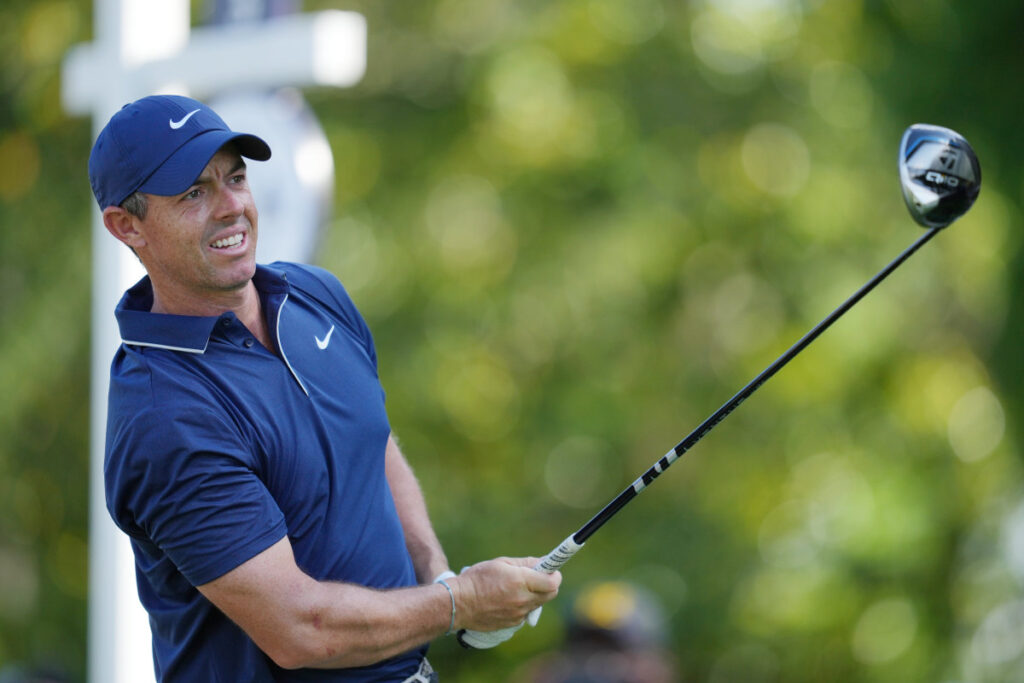CHARLOTTE, N.C. – Driver-Gate will enter Sunday with no answers from the Rory McIlroy camp on precisely what happened with his driver that was deemed non-conforming on Tuesday at the PGA Championship.
It is, in essence, a matter of too much ado about nothing. Still, because McIlroy has been silent and the PGA of America has not been transparent, Driver-Gate has become a much bigger issue than it needed to be.
The USGA routinely tests a sample of drivers at PGA Tour tournaments and majors.
Just as routinely, the testing reveals a percentage of drivers that, due to basic wear and tear, creep over the conforming/non-conforming line and need to be replaced by the player.
At no time is this process intended to catch a player who is cheating; instead, it is designed to maintain a level playing field.
Since the news broke that McIlroy’s driver was deemed non-conforming, the Masters Champion has not discussed the incident.
The PGA of America issued a statement (see below) on Saturday as McIlroy was playing in his third round, confirming that testing occurred early week, but also stating that they are not using a transparent process and not providing any information about the results of the testing or in the case of non-conformance, which players clubs were deemed non-conforming.
We don’t know if the McIlroy driver, which was deemed non-conforming, was used at the Masters. But if it was, there is no way to know when it became non-conforming.
What is clear is that keeping the results and the players who used non-conforming equipment under wraps creates an environment of mistrust among the fans and the other players.
According to sources, approximately 30 drivers were tested at the PGA Championship, and roughly 8 to 10 were deemed non-conforming this week.
The DP World Tour also conducts similar testing to the USGA, with the assistance of the R&A, at three or four events annually; however, it does not disclose the results of the testing.
The LIV Golf League has confirmed that it does not currently conduct standard equipment testing with the USGA. However, it’s part of the league’s future plans as it continues to develop its relationships with the USGA and the R&A.
In the world of transparency, if the Tours and other golf organizations would disclose their information about testing and its results, the McIlroy situation would not even be a blip on the radar screen, but instead it’s a difficult situation that will not go away until McIlroy speaks and even then, may still have a life of its own and be a needless distraction for everyone involved.
In a game where betting is an integral part of the ecosystem, the PGA of America has a betting parlor on site this week at Quail Hollow, making transparency paramount.
The PGA of America should review its policies and reassess its stance on disclosing the results of driver testing for future events.
PGA of America Statement
“We can confirm that the USGA was invited to do club testing at the PGA Championship, at the PGA of America’s request. That testing program is consistent with the same level of support that the USGA provides to the PGA Tour and other championships, as part of their regular programs for driver testing. The standard process involves approximately one-third of the field being randomly tested under the program. That was the case at Quail Hollow this week. Finding driver heads that have crept over the line of conformance is not an unusual occurrence, especially for clubs that are struck thousands of times over a long period. The results are kept confidential to protect players, who are unaware that the club has fallen out of conformance and are not responsible for it, except for hitting the club thousands of times. Players are asked to change heads if necessary, and all do without issue. Publicly identifying players whose club did not conform can lead to that player being questioned unnecessarily. Neither the USGA nor the PGA of America has any concerns about player intent.”
–Kerry Haigh, Chief Championships Officer, PGA of America
Read the full article here


